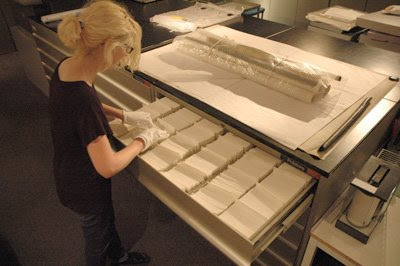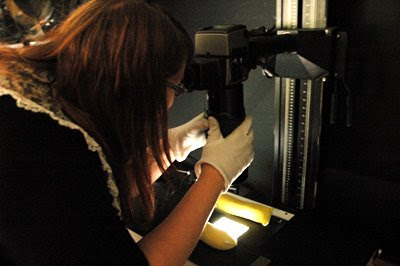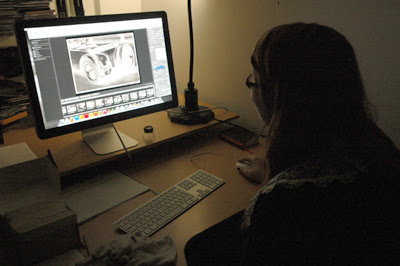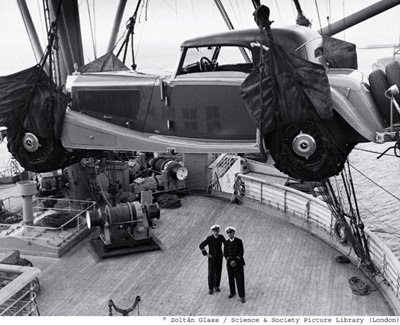Over the weekend, you might have seen this press release from Daimler AG (the Mercedes-Benz people). It makes official the news that Daimler have commissioned us to digitise the museum’s collection of car and motor racing photographs, taken by Zoltán Glass in the early 1900s.
We actually started digitising the photos some time ago, and we’re going to get as many done as we can by next year. There are 10,000 of them in all. We’re up to about 1,600 already.
It’s the job of our Collections Access Assistant, Claire Cocks, to fetch and prepare each photo for digitizing (below). Clare dons the protective white gloves and slides open a drawer in our Insight centre, and there’s the Zoltán Glass collection—filed like an enormous library card catalogue, containing thousands and thousands of pictures from the early 1930s.

Each photograph is actually a little mini-collection of its own: the negative, a contact (i.e. negative-sized) print with info on the back, and an envelope, each bit tucked away in its own individual sleeve.

As Daimler’s press release points out, we don’t scan the contact prints. Instead, we work from the original negative. The museum’s Photographic Assistant, Kirsty Fife (below), tucks the negative underneath our Hasselblad digital medium-format camera—purchased especially for this Zoltán Glass work—and scans away. Then she ‘tweaks the curves’ (i.e. boosts highlights and shadows to avoid the ‘flat’ look you often get from a scanned negative), crops and rotates where necessary, and stores the final file.



The collection is a fascinating one—or, as Claire puts it to me, ‘awesome’. There are photographs of cars, prototypes, rare vehicles that no longer exist, rally car racing and spectators, mechanics in action, Nazi automobile rallies, Mercedes trade show stands—it’s an amazing snapshot of both the motoring world, and the world as a whole pre-WWII.

We’re aiming to be all done by April 2010.